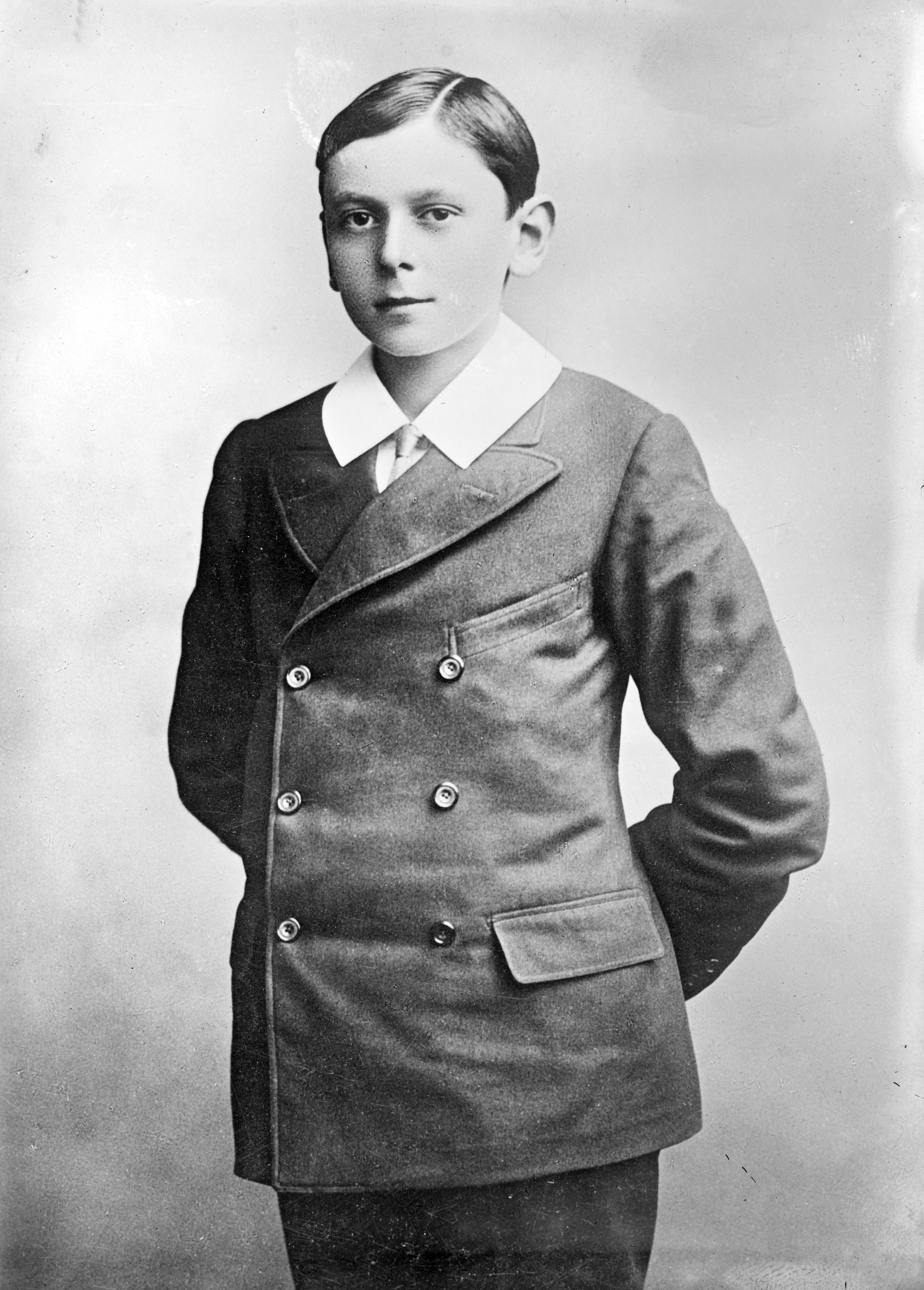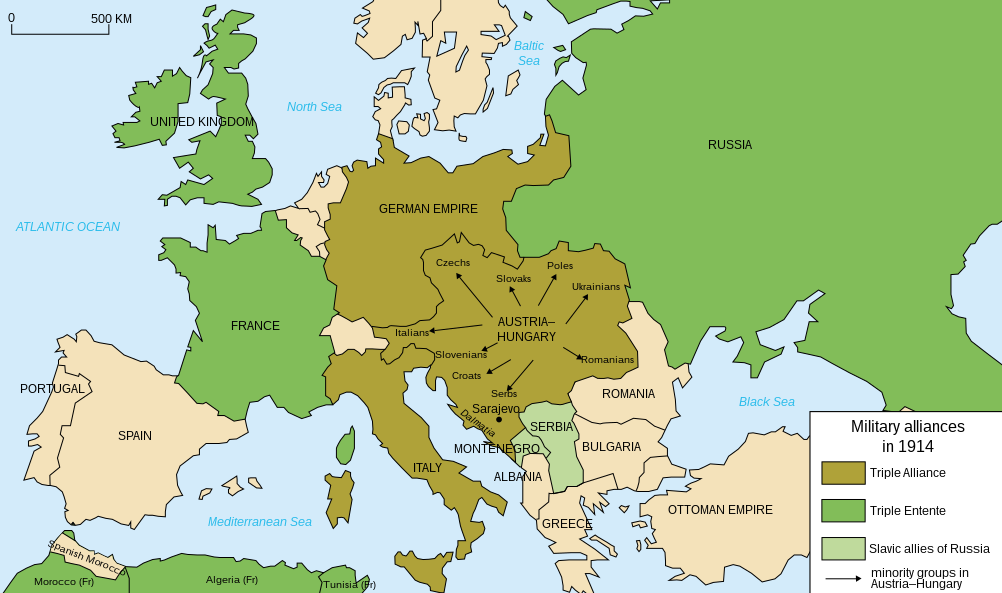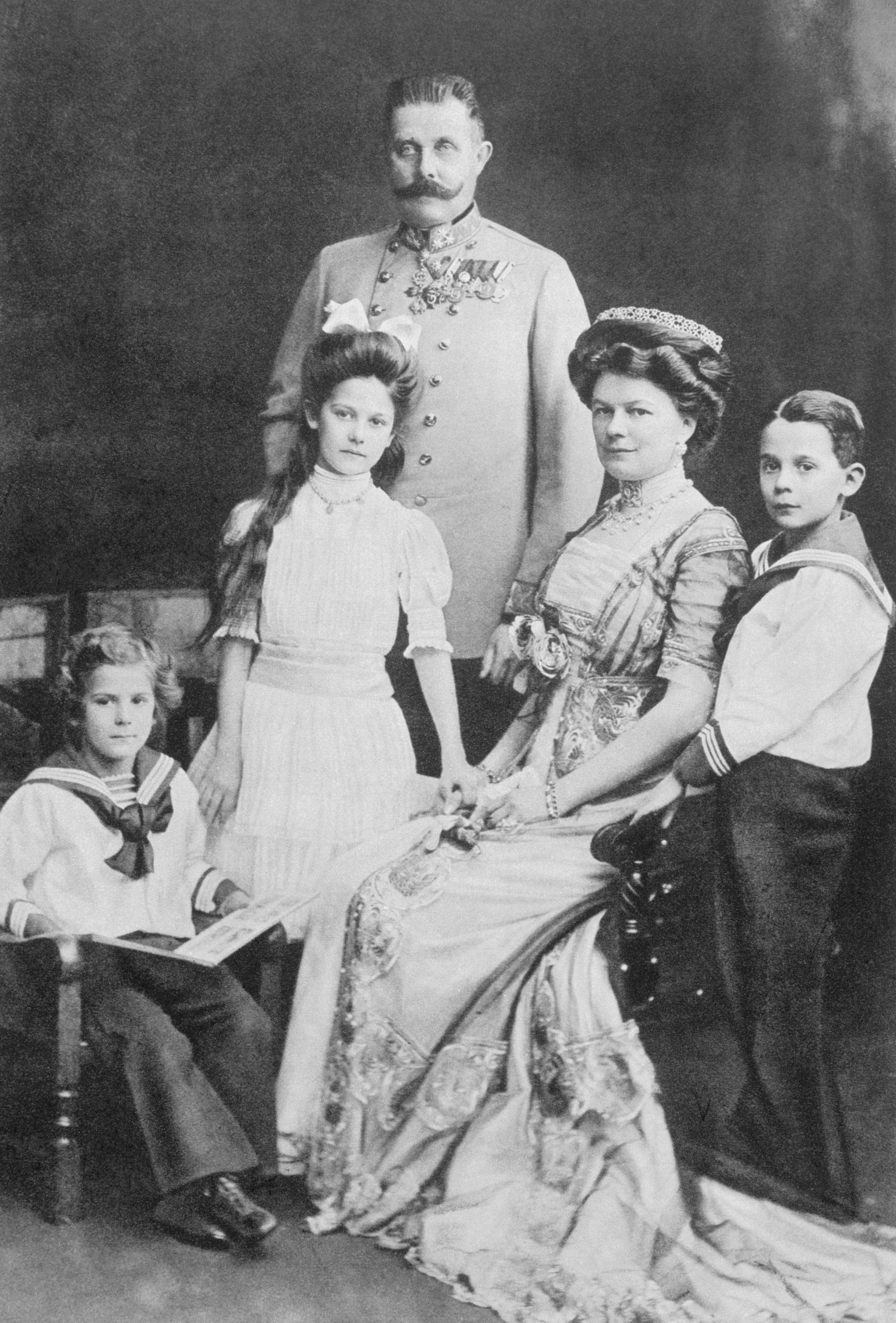by Susan Flantzer © Unofficial Royalty 2014

Prince Maurice of Battenberg; By Royal Photographers Bassano National Portrait Gallery, Public Domain, https://commons.wikimedia.org/w/index.php?curid=74566003
Prince Maurice of Battenberg was born on October 3, 1891, at Balmoral Castle, his grandmother’s beloved home in Aberdeenshire, Scotland. He was the third son and the youngest of the four children of Princess Beatrice of the United Kingdom, Queen Victoria’s youngest child, and Prince Henry of Battenberg. The birth of a prince in Scotland was cause for great celebration. A royal salute was fired, a bonfire was built, and the locals who lived and worked on the Balmoral estate drank whiskey to the newborn prince’s health, paraded, and danced.

The Baptism of Prince Maurice of Battenberg by George Ogilvy Reid; Credit – The National Galleries of Scotland
The infant prince was christened on October 31, 1891, in the drawing-room of Balmoral Castle. It was the first christening of a prince in Scotland for 300 years. Queen Victoria, the proud grandmother, commissioned a painting to commemorate the christening (above). She can be seen in the painting by the Scottish artist Sir George Reid holding her grandson, dressed in the same christening gown used by so many princes and princesses before him, with the baby’s father Prince Henry, wearing the Royal Stuart tartan, standing next to her. The new prince was given the names Maurice (his father’s middle name), Victor (after his grandmother Queen Victoria), and Donald (a compliment to Scotland).
His godparents were:
- The Duchess of Connaught (his maternal aunt by marriage, born Princess Louise Margaret of Prussia)
- The Princess of Leiningen, born Princess Marie of Baden (wife of Ernst Leopold, 4th Prince of Leiningen who was his second cousin once removed)
- The Duke of Clarence (his first cousin, Prince Albert Victor, known as Prince Eddy)
- Prince Franz Joseph of Battenberg (his paternal uncle)
- The Hereditary Grand Duke of Hesse and by Rhine (his first cousin Ernst Ludwig, the future Grand Duke of Hesse and by Rhine)
Prince Maurice had three older siblings, two brothers and a sister:
- Prince Alexander of Battenberg, after 1917 Alexander Mountbatten, Marquess of Carisbrooke (1886 – 1960), married 1917 Lady Irene Denison
- Princess Victoria Eugénie of Battenberg (1887 – 1969), married 1906 King Alfonso XIII of Spain, they are the paternal grandparents of King Juan Carlos I of Spain
- Prince Leopold of Battenberg, after 1917 Lord Leopold Mountbatten (1889 – 1922)

Princess Beatrice and her children; Photo Credit – Wikipedia
Prince Maurice’s mother was one of two daughters (Princess Alice was the other) of Queen Victoria who was a hemophilia carrier. His brother Leopold was a hemophiliac and died during a hip operation. His sister Victoria Eugénie, known as Ena, was a hemophilia carrier and had two hemophiliac sons. For more information on hemophilia in Queen Victoria’s family see Unofficial Royalty: Hemophilia in Queen Victoria’s Descendants.
Queen Victoria had allowed Maurice’s parents to marry under the condition that Beatrice and Henry live permanently in the United Kingdom with her. Henry was increasingly bored with court activity and longed to do something on his own. Ten years after his marriage, Henry pleaded with his mother-in-law to allow him to join the Ashanti expedition fighting in the Anglo-Ashanti Wars. Queen Victoria reluctantly agreed and Henry left for Africa on December 6, 1895. In Africa, Henry contracted malaria, was sent back home but died aboard the ship on January 20, 1896. Maurice was four years old, the same age his mother Beatrice was when her father Prince Albert died.
Maurice was the child that most resembled his father and he was his mother’s favorite. He attended Lockers Park School, a day and boarding preparatory school in Hemel Hempstead, Hertfordshire, England, and then attended Wellington College in Crowthorne, Berkshire, England.

Prince Maurice; Photo Credit – Wikipedia
In 1900, Prince Maurice’s much older first cousin Prince Christian Victor of Schleswig-Holstein, son of Queen Victoria’s daughter Princess Helena, was participating in the Boer War when he came down with malaria and then enteric fever and subsequently died. Maurice was upset with his cousin’s death especially since Christian Victor had served with his father in the Anglo-Ashanti Wars. Prince Christian Victor’s regiment was the 60th King’s Royal Rifles. The news of Prince Christian Victor’s death arrived at Balmoral Castle where Maurice’s family and Christian Victor’s family were both staying. In his dressing gown, Maurice went to the room of Christian Victor’s sister Princess Helena Victoria (known as Thora), and said, “Cousin Thora, it may comfort you to know that I have decided to join the 60th when I am old enough.”
In 1910, Prince Maurice fulfilled this promise to his cousin Thora and joined the 60th King’s Royal Rifles. When World War I started, all three of Princess Beatrice’s sons were serving in the British Army and the princess received a letter asking her what effort she would play in the effort to win the war. Princess Beatrice replied that her husband had died on active duty and that all three of her sons had left for the front on August 12, 1914, just eight days after the United Kingdom had declared war.
On October 27, 1914, Prince Maurice was leading an attack on the German frontline at Zonnebeke near Ypres in the Belgian province of West Flanders when he was mortally wounded by shrapnel. The platoon sergeant tried to offer help to the wounded prince, but Maurice, aged 23, died before his men could bring him to a safer place. Upon hearing the news, King George V, Prince Maurice’s first cousin, and Queen Mary drove to Kensington Palace to console Princess Beatrice. Lord Kitchener, Secretary of State for War, offered to bring Prince Maurice’s body back to England, but Princess Beatrice replied, “No, let him lie with his comrades.” Prince Maurice was buried in the Ypres Town Commonwealth War Graves Commission Cemetery in Ypres, Belgium.
On November 5, 1914, a memorial service for Prince Maurice was held at the Chapel Royal at St. James’ Palace in London. Those who attended included Princess Beatrice, King George V, Queen Mary, Queen Alexandra, Prime Minister Herbert Asquith, Field Marshal Kitchener, Field Marshal Grenfell, and the former Empress Eugénie of France whose only child was killed in 1879 while serving with the British in the Anglo-Zulu War.

Prince Maurice’s grave today; Photo Credit – Wikipedia
This article is the intellectual property of Unofficial Royalty and is NOT TO BE COPIED, EDITED, OR POSTED IN ANY FORM ON ANOTHER WEBSITE under any circumstances. It is permissible to use a link that directs to Unofficial Royalty.
Sources
Dennison, Matthew. The Last Princess. New York: St. Martin’s Press, 2007. Print.
Duff, David. The Shy Princess. London: William Clowes and Sons, Limited, 1958. Print.
“Prince Maurice of Battenberg.” Wikipedia. Web. 13 Oct. 2014.
































































